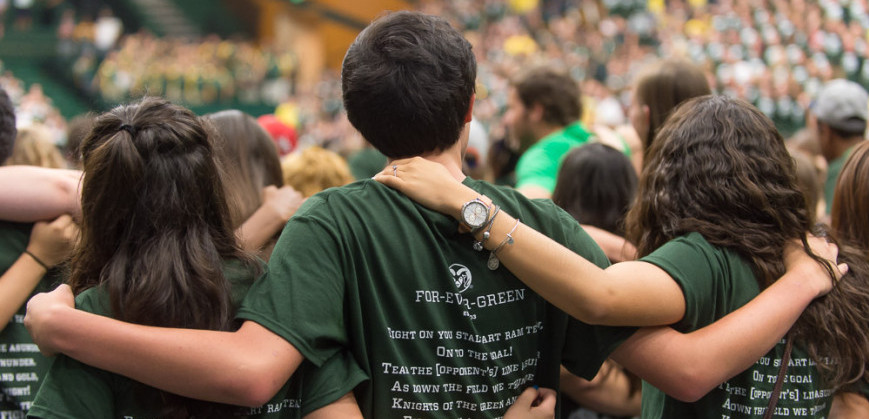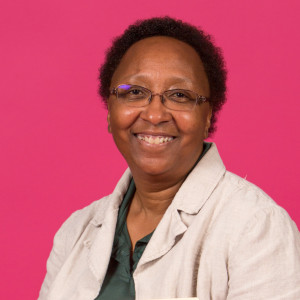
Just as with the construction taking place on campus, Colorado State has been very intentional in building programs for student success. The anticipated record number of students coming to CSU this year, and unprecedented rates of alumni participation and engagement, tell an overnight success story at least a decade in the making.
Associate Vice President for Student Success Paul Thayer recalls that about 10 years ago, the President’s office asked for a report on graduation and retention rates at CSU.
“A group of us from academics and student affairs tackled the project, and through discussions with other divisions and the Provost’s office, we realized that those numbers weren’t the only way to measure student success,” he said. “The more we thought about it, the more we understood that successful learning comes from deep engagement, not only with the subject but with the whole learning environment. We figured that increased graduation and retention rates would naturally follow if we could create an environment that supported successful learning.”
They have. At the end of summer 2013, CSU recorded historic rates of graduation after four, five and six years. Since the initiation of the student success initiative in 2007, the retention of new students to the second year has increased to more than 86 percent, and first-time students are persisting to the third, fourth and fifth years at higher rates.
Of students who graduate, 58 percent do so in four years; 76 percent do so in 4.5 years. This efficiency to graduation saves both time and money for students and their families.
Thayer said that gaining these improvements – and there’s room for more — has required a comprehensive approach and long-term commitment from every unit on campus.
“There’s no silver bullet or single strategy or simple fix that creates a quality learning environment,” he said. “And it’s a lot easier to talk about than to implement.”
Academics and other activities
 One of the concepts fundamental to an environment that supports deep learning is that both academic and learning-focused activities outside the classroom are equally important to students’ development.
One of the concepts fundamental to an environment that supports deep learning is that both academic and learning-focused activities outside the classroom are equally important to students’ development.
“Students don’t separate themselves into different people inside and then outside of the classroom,” explained Blanche Hughes, vice president for Student Affairs. “They need to be supported in all parts of their educational experience and that requires faculty, staff and students to work together to make that happen.”
Once the university accepted the “whole student” concept, and that learning happens everywhere – in residence halls, from other students, faculty outside the student’s major, opportunities for undergraduate research, and through activities and interactions outside the classroom – the next step was to encourage various divisions and departments to create such an environment. It’s a process that is ongoing, according to Thayer, that now involves the divisions of Enrollment and Access, Information Technology and the Office of the Vice President for Diversity as well as academics and student affairs.
“We were very thoughtful about how to bring learning and co-curricular activities together,” he said. “Campus should be a place where you are comfortable and where you are known, but also where you are intellectually challenged, where you can find an educational purpose and can be active in meaningful ways.”
Thayer said the cross-divisional partnership included asking new questions about every aspect of how students and the university interact. For example, he said, although transfer students make up about of a third of the student population today and come to campus with unique needs and expectations, in the past they were given the same orientation as those straight out of high school.
“Different students have different needs at different stages of their academic career to succeed,” Thayer said. “And while we had been extremely successful in fulfilling our land-grant mission of providing access to all interested students – about one of every four CSU students is the first one in his or her family to go to college – we were not providing the appropriate support to allow them to be successful once they got here.”
Deep learning and engagement
From changing academic advising to providing an array of data-informed opportunities for early intervention to keep struggling students from falling behind in their studies, Colorado State has been implementing the philosophy of deep learning and engagement for the past nine years.
Even the new buildings on campus support this approach. Behavioral Science Building and Rockwell Hall West, for example, allow for technological innovations such as “flipped classrooms,” and the residential learning communities let students share their interests and passions with their peers “at home.”
Another physical space devoted to deep learning and teaching for successful outcomes is called, appropriately enough, The Institute for Learning or Teaching – most often called TILT. Best known for the popular tutoring sessions offered in the Great Hall of the historic building that once housed CSU’s first library, TILT also caters to faculty committed to improving their teaching skills and methods.
“TILT can help faculty redesign their courses to make them more effective and relevant to students,” Thayer said. “And through the Provost’s Academy, faculty teaching foundational courses are working with those teaching upper division courses to make sure the coursework not only aligns but allows students to build on their knowledge,”
The dedication to success starts with the admissions process, continues through orientation and Ram Welcome to the Taking Stock and U-Turn programs that keep student progress on the radar of faculty and advisors.
It’s probably not a coincidence that alumni engagement has also risen to record levels over the past few years.
“If students have a positive experience from the minute they are recruited to the day that they graduate, they will want to stay connected to CSU,” Hughes said. “That connection comes from all areas of the university, not just the classroom or their college. If they can be truly engaged in leadership opportunities, research, intramural or club teams, NCAA athletic teams, working on campus, or other activities, they will remember that their total experience was enhanced by being at CSU. This is where they grew up, made lifelong friends, learned about other perspectives and people.”
As enrollment grows, maintaining this level of engagement will become even more important to student success.
“We want to make sure that no student ‘falls through the cracks’ and gets lost,” Hughes said. “Every student needs to be cared for and we are having great discussions about making sure that we are intentional about connecting to students across campus.”